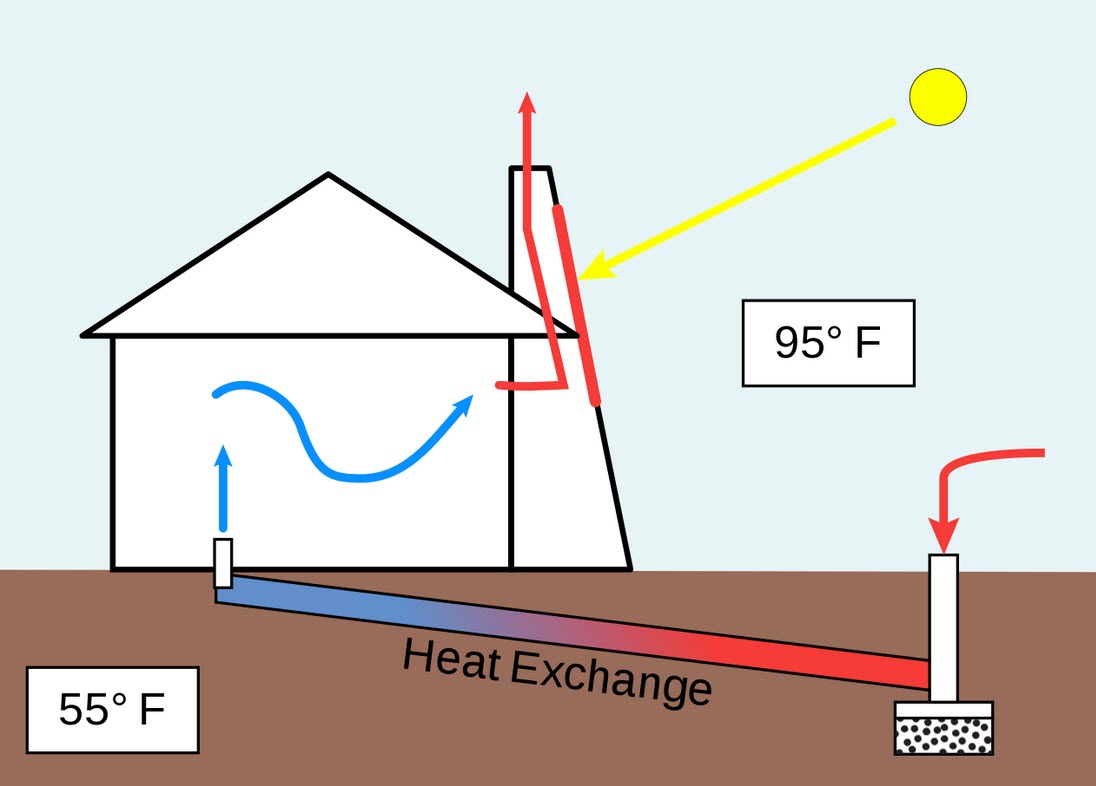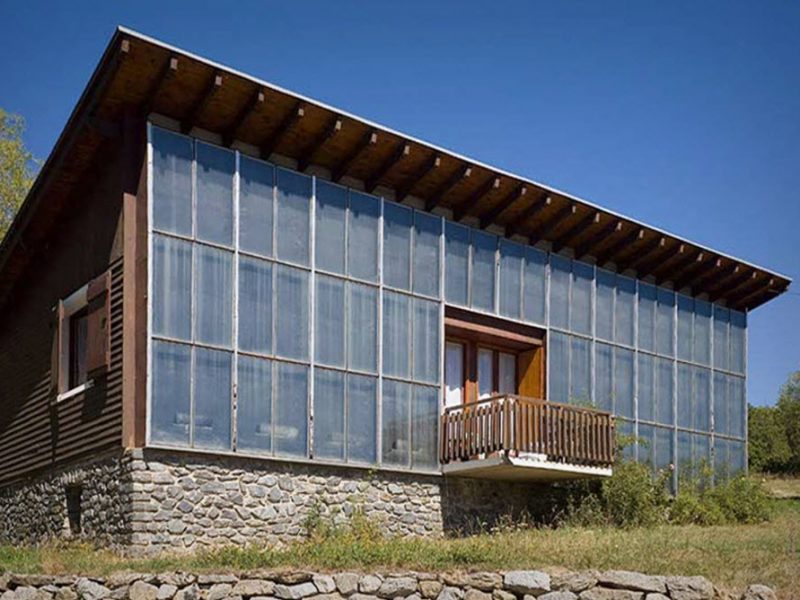A solar chimney, also known as a thermal chimney, can be used to improve ventilation in a building. The ventilation will be achieved through convection of air heated by a passive solar energy system. Basically, a solar chimney is a vertical shaft through which heated air will flow.
(Please note: A solar updraught tower is not the same as a solar chimney, and is used for power generation, not ventilation.)
Solar chimneys have been used for a very long time and can greatly enhance the natural stack ventilation through a building. Examples of parts of the world where solar chimneys have a long history are the Near East, the Middle East and parts of the Mediterranean region.
Solar chimneys have historically been especially popular in areas where many days of the year are hot windless days. In areas with more wind, wind catchers (also known as wind towers and wind scoops) tend to be more feasible.
How does it work?
In its most basic form, the solar chimney is a dark-painted vertical shaft.
During the day, the sun will heat the chimney and the air inside it. Warm air will rise, creating an updraught of air within the chimney. At the base, this will result in suction, as new air is drawn into the chimney from outside the shaft to replace the warmer air that has left at the top. This suction can be utilized to ventilate and cool the building.
In some designs, trees are planted to provide shade for the area from which new air is drawn, thus allowing for even cooler air, and there are even more elaborate designs available where the incoming air goes through underground ducts to cool down.
Basic design elements of a solar chimney
Throughout the years, more and more advanced solar chimneys have been developed. Here are a few examples of basic design elements that can be elaborated to improve the chimney´s functionality.
The shaft
How well the solar chimney works will in part depend on the ventilation shafts location, height, diameter and the thermal properties of the structure.
Solar collection area
The entire shaft can be a solar collector area (heat-absorbing surface), but some designs only have a collector area on top. Having the right orientation is crucial for harnessing enough solar energy, but factors such as glazing, insulation and the thermal properties of the materials are also important.
The size of the solar collection area is more important than the diameter of the chimney. A larger surface area gives us a more effective heat exchange.
The inlet and outlet
When designing inlets and outlets for the air, it is important to be careful about location, size and aerodynamic aspects. The top vents should face away from the direction of the prevailing wind.
Colour
Solar chimneys are very dark-coloured, to absorb more sun heat.
Other considerations
– Solar chimneys are usually placed on the sunniest side of the building.
– Heat absorption can be boosted by glazing the surface on the side of the chimney facing the sun.
– Solar chimneys that help ventilate the whole house are taller than the building´s roof level.
A real-world example
One example of a fairly modern building that use solar-assisted passive ventilation is the BRE office building in Hertfordshire, England. This building also have a system for solar shading, and hollow concrete slabs with embedded underfloor cooling.
The BRE building has five vertical solar chimney shafts that help with both ventilation and cooling. The main components of the stacks are:
– A south facing glass-block wall
– Thermal mass walls
– Round steel exhausts, placed several meters above the roof level.



